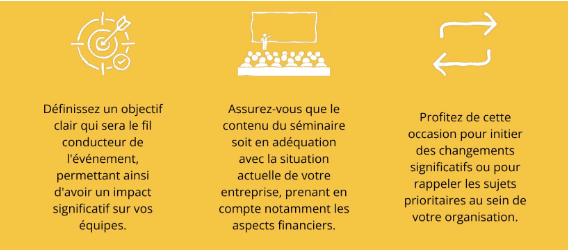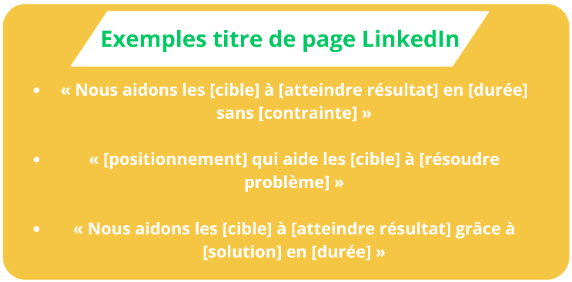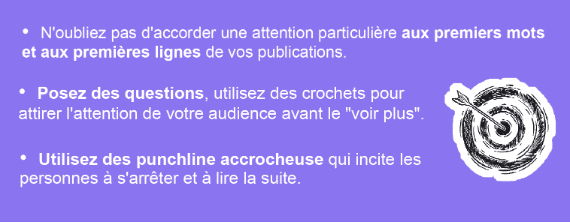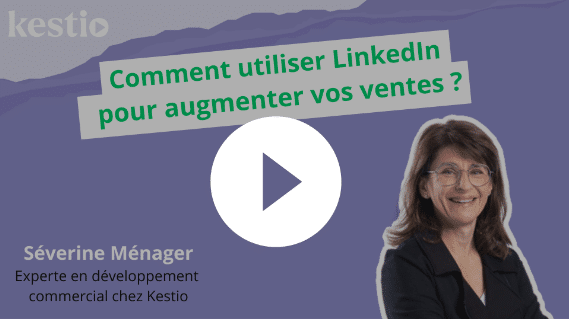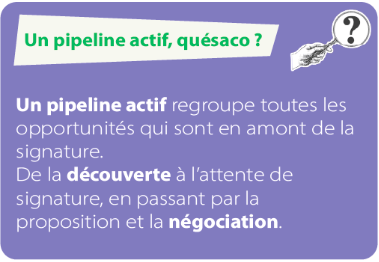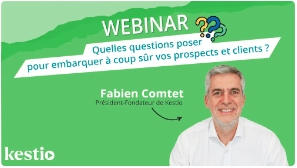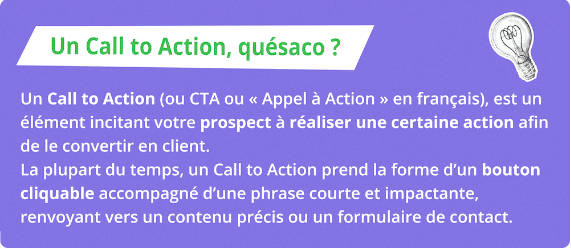La motivation des équipes de vente est l’un des leviers les plus puissants pour atteindre et dépasser les objectifs de vente. Il n’est pourtant pas toujours facile de maintenir un engagement commercial durable dans des environnements de travail exigeants et compétitifs. En 2025, les managers se doivent d’adopter des approches modernes et éprouvées pour inspirer leurs équipes et maximiser leur performance.
Dans cet article, découvrez 7 stratégies de motivation qui fonctionnent vraiment pour dynamiser vos commerciaux, renforcer leur engagement et les aider à exceller dans leurs activités.
Les objectifs qui boostent la performance : Comment définir des objectifs clairs et atteignables pour engager vos commerciaux.
Stratégies de récompense : Des incitations personnalisées et des concours pour dynamiser vos équipes.
Les outils indispensables : CRM, programmes de formation et leads qualifiés pour faciliter le travail des commerciaux.
Esprit d’équipe : Les bonnes pratiques pour renforcer la collaboration et la cohésion.
Suivi des résultats : Les indicateurs clés pour mesurer l’engagement et ajuster vos stratégies.
Étude de cas inspirante : Une PME qui a boosté ses ventes grâce à des initiatives motivantes.
Prêt à transformer la motivation de vos équipes en levier de croissance ? Lisez la suite pour découvrir des solutions concrètes et applicables dès maintenant !
1. Des objectifs qui motivent : Stimulez l’engagement et la productivité.
L’un des piliers essentiels pour maintenir la motivation de votre équipe réside dans la définition d’objectifs clairs, précis et surtout, atteignables. Ces objectifs de vente doivent être non seulement réalistes, mais également suffisamment stimulants pour engager vos collaborateurs dans une dynamique de dépassement de soi.
En intégrant des stratégies de vente adaptées, vous pouvez transformer ces objectifs en véritables moteurs de l’engagement commercial. Une équipe qui comprend parfaitement ce qu’on attend d’elle et qui perçoit la valeur de ses contributions sera naturellement plus motivée.
1.1. Objectifs SMAR(P)T : La méthode pour booster vos performances commerciales.
Les objectifs doivent être :
- Spécifiques : Un objectif clair comme “augmenter les ventes de 15 % dans le secteur X”.
- Mesurables : Fournissez des indicateurs précis pour suivre les progrès.
- Atteignables : Un équilibre entre défi et réalisme est essentiel.
- Pertinents : Alignés avec les priorités stratégiques de l’entreprise.
- Temporellement définis : Fixez des échéances claires.
Exemple : Une équipe peut viser 10 nouveaux clients par trimestre avec un panier moyen supérieur à 5 000 €.
1.2. Diviser les objectifs, multiplier les performances.
Ne visez pas uniquement les résultats annuels ! Les objectifs annuels sont essentiels, mais souvent trop abstraits à court terme.
Segmentez ces objectifs en étapes mensuelles ou hebdomadaires afin de maintenir la dynamique des équipes commerciales au quotidien. Les commerciaux ressentent une satisfaction immédiate lorsqu’ils atteignent des étapes intermédiaires, car ces petites victoires renforcent leur sentiment d’accomplissement et leur motivation. En segmentant les objectifs globaux en étapes plus petites et atteignables, vous leur permettez de visualiser leur progression et de rester engagés tout au long du processus.
Chaque étape réussie apporte de la reconnaissance et motive à relever les prochains défis. Cela crée un cercle vertueux où chaque petit succès renforce leur confiance et leur envie de progresser. Cette méthode aide à atteindre les objectifs tout en augmentant leur implication dans l’équipe et leur engagement dans les ventes.
Astuce : Associez des objectifs collectifs et individuels pour stimuler la collaboration.
2. Un programme de récompenses pour dynamiser vos performances commerciales.
Les récompenses et incitations sont des leviers puissants pour stimuler la motivation d’une équipe. Elles jouent sur le besoin fondamental de reconnaissance et de valorisation, des éléments essentiels pour renforcer l’engagement commercial.
Lorsqu’un commercial voit ses efforts récompensés, qu’il s’agisse de primes financières, de félicitations publiques ou d’avantages spécifiques, cela crée un lien clair entre les résultats obtenus et l’investissement personnel. Ces récompenses agissent aussi comme un catalyseur dans les stratégies de vente, en motivant les collaborateurs à atteindre, voire à dépasser leurs objectifs de vente.
En diversifiant les types d’incitations (financières, symboliques ou pratiques), on favorise une dynamique positive où chaque succès renforce l’envie de se surpasser. Ce système bien structuré contribue non seulement à améliorer les performances individuelles, mais aussi à consolider l’esprit d’équipe et à instaurer une culture de la réussite au sein de l’entreprise.
2.1. Récompenses personnalisées : Laissez chaque commercial trouver son plaisir.
Une approche unique ne suffit pas, car chaque commercial est motivé par des choses différentes. Pour maximiser l’impact des récompenses, il est essentiel de connaître vos collaborateurs : qu’est-ce qui les passionne ? Qu’est-ce qui les motive au quotidien ? Cette compréhension permet de proposer des récompenses personnalisées adaptées à leurs besoins et aspirations.
- Pour les amateurs de loisirs : Offrez des expériences telles qu’un bon pour un dîner, des places pour un événement sportif, ou un abonnement à une plateforme de streaming.
- Pour les orientés carrière : Proposez des formations spécialisées, un mentorat privilégié ou une opportunité de gérer un projet important.
- Pour les motivés par la reconnaissance : Organisez une remise de prix publique, un message de félicitations partagé avec toute l’équipe, ou une mention spéciale dans une newsletter interne.
- Pour les pragmatiques : Préférez des récompenses financières, des primes au résultat, ou des bons cadeaux à utiliser librement.
En adaptant les incitations à chaque profil, vous montrez que vous valorisez l’unicité de chacun et renforcez ainsi leur motivation et leur engagement envers l’équipe. Une telle approche favorise une dynamique positive, où chaque membre se sent reconnu et encouragé à se surpasser.
Exemple : Offrez un voyage ou un dîner étoilé pour les meilleurs performeurs.
2.2. La gamification au service de la vente : Créez des challenges captivants.
Les concours sont une méthode ludique et efficace pour stimuler vos équipes tout en favorisant une saine compétition. Voici quelques exemples supplémentaires pour diversifier vos initiatives :
- Concours de prospection : Récompensez celui qui contacte le plus grand nombre de prospects qualifiés sur une période donnée.
- Défi des produits spécifiques : Attribuez des points pour chaque vente d’un produit ou service clé à promouvoir.
- Challenge de fidélisation : Récompensez le commercial qui obtient le plus grand nombre de renouvellements ou de clients récurrents.
- Compétition de créativité : Offrez une récompense à celui qui propose les meilleures idées pour améliorer les pitchs de vente ou attirer des clients. La vente offre des similitudes innatendues avec les échecs.
- Défi par équipe : Divisez votre force de vente en équipes et lancez un concours pour atteindre des objectifs collectifs.
- Concours des clients satisfaits : Primez le commercial avec le plus d’avis positifs ou de retours clients enthousiastes.
Astuce : Favorisez des concours où tous peuvent briller en alternant les objectifs, pas seulement les meilleurs vendeurs.
3. Allégez les contraintes de vos équipes grâce à des outils adaptés.
Même les commerciaux les plus motivés peuvent être freinés par un manque d’outils adaptés ou des processus inefficaces, ce qui impacte directement leur motivation d’équipe et leur engagement commercial. Pour maximiser leur efficacité et soutenir vos stratégies de vente, il est essentiel de leur fournir des outils modernes et des ressources pratiques. Des CRM intuitifs, des plateformes d’analyse de performance ou encore des outils d’automatisation leur permettent de se concentrer sur leur cœur de métier : atteindre leurs objectifs de vente et conclure des affaires.
Pour en savoir plus sur le sujet, vous pouvez télécharger notre livre blanc : comment passer à la vente conseil à l’ère du digital ?
3.1. Investir dans un CRM performant.
Un CRM bien choisi permet de :
- Suivre les opportunités et relances, en centralisant les informations sur les prospects et clients pour ne jamais manquer une étape clé.
- Automatiser certaines tâches administratives, comme l’envoi de rappels, la gestion des emails ou la mise à jour des données, permettant aux commerciaux de se concentrer sur les ventes.
- Mesurer les performances, en fournissant des rapports clairs et détaillés pour évaluer les progrès par rapport aux objectifs de vente et affiner les stratégies.
Exemple de CRM : HubSpot, Pipedrive, ou Salesforce Essentials.
3.2. Développez vos talents avec des programmes de formation continue.
Les formations sont un levier puissant pour optimiser les performances de vos équipes commerciales. Elles ne se contentent pas de transmettre des connaissances : elles permettent d’acquérir des compétences clés en prospection ou négociation, d’intégrer les dernières tendances du marché et de maîtriser de nouveaux outils technologiques.
En renforçant à la fois la confiance et l’efficacité des commerciaux, elles jouent un rôle central dans l’atteinte des objectifs et la compétitivité de votre entreprise. Une équipe formée est une équipe mieux préparée à relever les défis et à saisir les opportunités.
Les formations permettent de :
- Développer de nouvelles compétences en prospection ou négociation.
- Rester à jour sur les tendances du marché et les outils technologiques.
- Renforcer la confiance et l’efficacité des commerciaux.
Astuce : Combinez des formations en présentiel avec des modules en ligne pour s’adapter aux emplois du temps de vos commerciaux.
3.3. Accélérez vos résultats avec des leads bien ciblés.
Les commerciaux perdent souvent un temps précieux sur des leads peu prometteurs, ce qui peut nuire à leur motivation d’équipe et diminuer leur engagement commercial. Apprenez à faire gagner 50 % de temps de travail à vos commerciaux.
Pour optimiser leur efficacité et leur satisfaction, il est essentiel d’adopter des stratégies de vente centrées sur la qualité plutôt que sur la quantité. En collaborant étroitement avec l’équipe marketing, vous pouvez mettre en place des processus pour identifier et fournir des leads qualifiés, prêts à être contactés.
4. Faites de la reconnaissance un pilier de votre culture d’entreprise.
La reconnaissance est l’un des moyens les plus simples et efficaces pour booster la motivation de l’équipe et maintenir un haut niveau d’engagement commercial. En valorisant les efforts et les réussites, qu’ils soient individuels ou collectifs, vous créez un environnement où chaque membre se sent apprécié et soutenu dans l’atteinte des objectifs de vente.
4.1. Créez une dynamique positive en célébrant chaque étape franchie.
Ne vous limitez pas à féliciter les gros contrats. Appréciez également les efforts et les progrès individuels ou collectifs, comme :
- Une excellente présentation commerciale : Qu’elle ait permis de convaincre un prospect ou simplement démontré une grande maîtrise du sujet.
- Une amélioration significative : Par exemple, un commercial qui augmente son taux de conversion ou améliore son suivi client.
- Un premier contrat signé : Célébrez les premières réussites, qui sont des étapes marquantes dans la carrière d’un commercial.
- Une initiative audacieuse : Comme la création d’une nouvelle approche ou d’un outil de prospection original. Félicitez un commercial capable d’obtenir plus de rendez-vous avec moins d’efforts.
- Une contribution au travail d’équipe : Soutenir un collègue dans une négociation difficile ou partager des astuces efficaces.
- Le dépassement d’un objectif partiel : Même si l’objectif final n’a pas encore été atteint, valorisez les étapes franchies.
Exemple concret : Organisez un déjeuner d’équipe pour célébrer un trimestre réussi.
4.2. Le feedback bienveillant : Un catalyseur pour des performances optimales.
Un feedback régulier aide les commerciaux à progresser en renforçant leurs points forts et en adressant leurs défis. Voici d’autres exemples pour le faire efficacement :
- Personnalisez le feedback : Adaptez vos remarques à chaque commercial en tenant compte de sa personnalité, de ses objectifs et de son style de travail.
- Utilisez des exemples concrets : Illustrez vos retours avec des situations spécifiques (par exemple : « Lors de ta dernière présentation, ta clarté sur les bénéfices du produit a marqué le client. »).
- Posez des questions ouvertes : Stimulez l’auto-réflexion avec des questions comme « Que penses-tu de ta dernière interaction client ? » ou « Que ferais-tu différemment ? ».
- Valorisez les efforts, pas seulement les résultats : Félicitez un commercial pour une prospection intense même si elle n’a pas encore abouti.
Fixez des objectifs mesurables suite au feedback : Par exemple, « Améliorer ton taux de conversion de 10 % sur les trois prochains mois. »
5. Libérez le potentiel créatif de votre équipe grâce à l’autonomie.
Les commerciaux sont souvent plus engagés lorsqu’ils sentent qu’ils ont un contrôle sur leur travail. Donnez-leur l’espace pour prendre des décisions.
5.1. Fixer un cadre clair
Offrez une structure claire pour guider vos commerciaux, tout en leur laissant la liberté de choisir comment atteindre leurs objectifs de vente. En fixant des lignes directrices solides et des outils adaptés, vous créez un cadre sécurisant qui favorise la motivation d’équipe. Cependant, en leur permettant de prendre des décisions sur la manière de mener leurs actions, vous stimulez leur autonomie et leur créativité. Par exemple :
- Proposez des templates d’email ou de messages : Encouragez-les à les adapter selon le profil du prospect ou leur propre style.
- Organisez des sessions de brainstorming : Permettez à l’équipe de proposer des approches nouvelles pour répondre aux objections courantes ou pour aborder des clients difficiles.
- Laissez-leur expérimenter des méthodes alternatives : Par exemple, tester un nouveau format de présentation ou une autre approche dans les réunions clients.
- Donnez de la flexibilité dans la gestion du temps : Autorisez les commerciaux à organiser leur emploi du temps en fonction des moments où ils se sentent les plus productifs.
Permettez la création de mini-projets : Donnez-leur l’opportunité de lancer une initiative, comme tester un marché de niche ou un segment de clientèle spécifique.
5.2. Faites de la prise d’initiative un pilier de la réussite collective.
Lorsque vos commerciaux proposent des idées ou des approches nouvelles, écoutez-les et testez-les. Cela renforce leur sentiment d’appartenance et leur motivation.
- Lancer une campagne pilote : Autorisez un commercial à concevoir et tester une campagne marketing spécifique pour un segment de clientèle qu’il a identifié.
- Personnaliser les outils : Laissez-les proposer des ajustements à un script de vente ou à un argumentaire en fonction de leur expérience terrain.
- Introduire un nouveau produit : Permettez à un commercial de diriger le lancement d’un produit ou service auprès d’un groupe restreint de prospects.
- Proposer des améliorations internes : Encouragez-les à suggérer des changements dans le processus de vente ou dans l’utilisation des outils CRM.
Créer des contenus spécifiques : Donnez-leur la liberté de produire des vidéos, articles ou présentations qui reflètent leur vision du produit et répondent aux besoins des clients.
6. Inspirez la coopération pour des résultats exceptionnels.
Un environnement collaboratif renforce non seulement la motivation de l’équipe, mais aussi la qualité des résultats. En encourageant la coopération entre les membres, vous créez une dynamique où chacun partage ses compétences et ses idées pour atteindre plus efficacement les objectifs de vente. Les échanges réguliers permettent d’identifier des solutions innovantes et d’ajuster les stratégies de vente en fonction des retours du terrain, tout en renforçant la cohésion du groupe.
6.1. Organiser des événements d’équipe
Créez des moments où vos commerciaux peuvent se connecter :
- Sessions de brainstorming collectives : Réunissez l’équipe pour réfléchir à des stratégies innovantes ou résoudre des problématiques spécifiques.
- Défis d’équipe : Organisez des concours ou challenges où les commerciaux doivent collaborer pour atteindre un objectif commun.
- Formations collectives : Proposez des ateliers ou des sessions de formation en groupe pour apprendre ensemble et renforcer la cohésion.
- Partages de succès : Dédié un moment chaque semaine pour que chaque membre partage ses victoires et bonnes pratiques avec l’équipe.
- Mentorat croisé : Associez les commerciaux expérimentés avec les nouveaux pour des échanges de compétences et d’expériences.
Astuce : Intégrez des moments de reconnaissance collective lors de ces événements.
6.2. La force des duos : Allier complémentarité et montée en compétence.
Associer des commerciaux juniors avec des commerciaux seniors est une stratégie de vente puissante qui favorise à la fois le partage des connaissances et le développement des compétences. En créant des binômes ou des relations de mentorat, vous instaurez un environnement d’apprentissage mutuel qui stimule la motivation de l’équipe et renforce leur engagement commercial.
Exemple : Un binôme peut travailler ensemble sur des comptes clés pour maximiser les chances de succès.
6.3. Coaching commercial : le moteur de la motivation et de la performance.
L’engagement des équipes passe par un coaching commercial de qualité. En individuel ou en groupe, il permet de maintenir une dynamique positive, d’aligner les objectifs et de booster la motivation. Un bon coaching, ce n’est pas juste transmettre des techniques de vente, c’est créer un environnement où chacun se sent soutenu, challengé et reconnu. En renforçant les compétences et en donnant des repères concrets, il transforme les efforts en résultats et soude l’équipe autour d’une vision commune.
7. Motivez vos équipes avec un suivi instantané des résultats.
La motivation d’une équipe de vente est un élément dynamique qui évolue en fonction des défis, des réussites et des conditions de travail. Pour maintenir un haut niveau de performance et un engagement commercial durable, il est essentiel de mettre en place des indicateurs clés permettant de suivre son évolution.
7.1. Mesurer l’engagement commercial.
Voici quelques indicateurs pour évaluer la motivation de votre équipe :
- Taux d’engagement dans les outils collaboratifs : Fréquence d’utilisation des CRM, plateformes de chat, ou tableaux de bord partagés.
- Temps moyen de réponse aux prospects : Un temps de réponse rapide peut refléter une forte implication.
- Nombre de leads qualifiés générés : Mesure l’effort en prospection et la qualité des contacts établis.
- Participation aux formations ou ateliers : Taux de présence et d’engagement actif lors des sessions de formation.
- Feedback clients : Nombre de retours positifs ou de mentions directes des commerciaux par les clients.
Taux de propositions envoyées : Indique l’avancée dans le processus de vente et l’effort consenti.
7.2. Écoutez pour progresser : L’impact des enquêtes sur vos équipes.
Demandez à vos commerciaux ce qui les motive ou ce qui pourrait être amélioré. Voici des exemple de questions à intégrer à vos enquêtes de satisfaction :
- Quels outils ou ressources vous manquent pour atteindre vos objectifs ?
- Comment évaluez-vous la communication au sein de l’équipe ?
- Avez-vous des idées pour améliorer nos processus de vente ?
- Quelles formations ou compétences aimeriez-vous développer ?
- Vous sentez-vous soutenu dans l’atteinte de vos objectifs ? Pourquoi ?
- Quel type de feedback trouvez-vous le plus utile ?
Astuce : Analysez les résultats pour identifier les axes d’amélioration et ajustez vos stratégies.
Étude de cas : Une PME qui motive ses commerciaux efficacement.
Prenons l’exemple d’une PME dans le secteur de la distribution :
- Problème initial : Les commerciaux étaient démotivés en raison d’un manque de reconnaissance et d’outils adaptés.
- Stratégies mises en place :
- Mise en place d’un concours trimestriel avec des récompenses attractives.
- Introduction de formations régulières sur les techniques de vente et d’un CRM performant.
- Organisation d’un déjeuner mensuel pour célébrer les petites victoires.
- Résultats :
- Augmentation de 20 % du chiffre d’affaires en un an.
- Meilleur engagement des commerciaux avec une réduction du turnover.
Conclusion : Boostez la motivation commerciale : Des stratégies sur mesure pour des résultats durables.
La motivation des équipes de vente repose sur une combinaison de stratégies bien pensées, adaptées aux besoins et aspirations des commerciaux. Fixer des objectifs de vente stimulants, offrir des récompenses et incitations variées, et créer un environnement collaboratif sont autant de leviers pour renforcer l’engagement commercial et optimiser les performances.
Chez KESTIO, nous accompagnons les PME dans l’élaboration de stratégies de motivation adaptées pour leurs équipes commerciales. Contactez-nous pour découvrir comment dynamiser votre force de vente et atteindre vos objectifs.
Vous souhaitez évaluer la santé commerciale de votre entreprise et identifier vos axes d’amélioration ? Le Score Salesforce vous apporte une analyse détaillée de vos processus de vente et de votre stratégie marketing pour maximiser vos résultats.
Ce diagnostic vous permet de :
Optimiser votre prospection et fidélisation pour accroître vos ventes.
Maximiser votre ROI marketing en adoptant les stratégies et outils les plus efficaces.
Prenez une longueur d’avance et transformez vos performances dès aujourd’hui !





